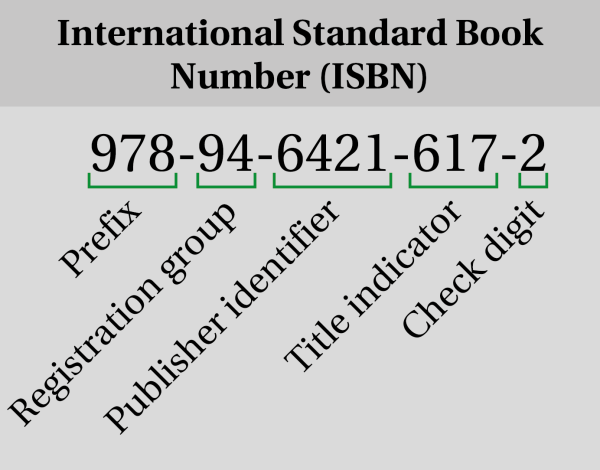What is an ISBN and how do I obtain one?
An International Standard Book Number (ISBN) is a unique identification number assigned to each book. This number makes your dissertation easy to find, since each book has a unique ISBN.
How is an ISBN formatted?
An ISBN is a 13-digit code made up of 5 elements:
- The first element of an ISBN is the prefix. A prefix distinguishes the ISBN from other product codes. Currently, a prefix of 978 or 979 indicates that it is a book.
- After the prefix comes the registration group that indicates the country of publication. For the Netherlands this number is 90 or 94.
- The third element of an ISBN is the publisher identifier. The publisher identifier is a series of numbers that indicating the publisher of the dissertation.
- Next comes the title indicator. These numbers are always different and belong to a specific title.
- Lastly comes the check digit. This digit is added to check for errors in the ISBN.

Why have an ISBN for your dissertation?
An ISBN contains all the information about the particular dissertation that is needed to make it easier to distribute and find. Therefore, adding an ISBN to your dissertation will make it easier for interested parties to find your dissertation. At many institutes it is mandatory to have an ISBN for your dissertation. You can check with your institute whether this is the case.
How to request an ISBN?
It is common to request an ISBN through the printer of your dissertation. This is usually an easy process that requires you to fill out an application form. Once you have requested the ISBN, you will usually receive it within a few business days. The cost of an ISBN varies per printer but will often be around 25 euros. On some occasions you have to request the ISBN through your research institute, most commonly at your library. For example, researchers at TU Delft can request an ISBN through an online form at their library.
What information do you need to apply for an ISBN?
To request an ISBN, the printer needs the following information from you:
- Title of your dissertation.
- Author's first and last name.
- Language in which your dissertation is written.
- Date of defence.
- Dutch Uniform Category Classification (NUR) code and description (a code consisting of 3 numbers) that represents the subject of a book. Visit www.boek.nl/nur to find the NUR code and description that best fits your dissertation).